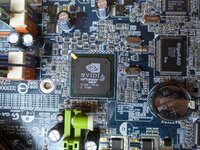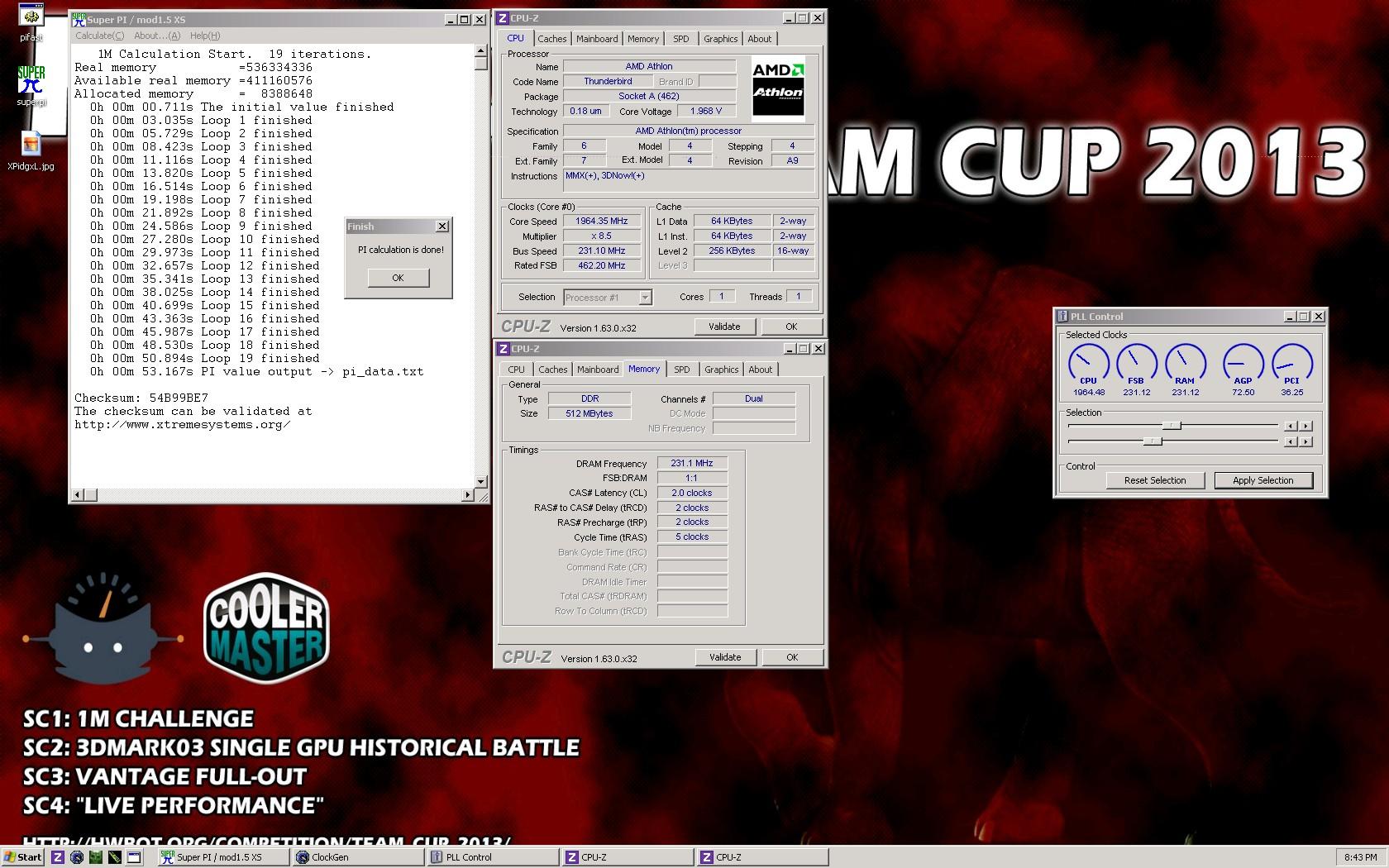@digitalbath
I was looking into changelogs of some bios files and I notices this with Tictac's d26-mantarays-xt:
D26 Manta Rays XT BIOS update as follows;
Change Log from D26 Black Mantaray-L12 :
***************************************
1 . CPU Interface Table 166 & 200 MHz FSB: (ABIT Stock ROMSIP)
- DISABLE CPU Interface : Unchanged
- ENABLED CPU Interface : Improved 3D Handling & Bandwith Efficiency multiplier lower than 10
Bandwith Peak @ Multiplier 10.5
2 . Vcore same as D23 3D Fire R1 & R2
3 . Command Per Clock : Enable By Default (V3.19 BPL)
4 . New Small ABIT Logo at Boot Up
5 . 3D Fire Ingredients : Included
6 . Bios Layout : Manta Rays XT Edition
7 . CPU Disconnect Function Patch as Recomended by nVidia Tech
8 . Side Band Addressing : Enable by Default ( Depends on VGA Driver. It might overwrite the setting to Disable)
9 . Dimm Driving Stregth & Slew Rate : Stock ABIT Configuration
10. Alpha Memory Timing : Stock ABIT Configuration
11. AMD XP Mobile -> Renamed to AMD Athlon XP-M for Athlon Mobile User
12. New Full Screen Logo on BootUp by
HouseRat@OcForums.com( Press Tab to show POST screen , Press Delete to enter Bios)
13. Improve 3DMark2001SE & 3D Application stability at high FSB
14. SATA Bios Version 4247
15. Soft L12 for Unmodded Tbred & Mobile
Could that be something worth investigating?
-------------------------------------------
I finished with the 3 BIOS files investigation:
Hardware used:
Corsair PC3200 XL 2x 512MB TCCD @ C3-4-4-8 1T 2.9v
Abit NF7-s (Nr. 5) - Max tested FSB with this TCCD kit: 257MHz @1.6v
Athlon XP-M 2400+ (Barton) / AXMH2400FQQ4C / IQZFA 0347SPMW / Y906156K30092
Watercooled
Roomtemp: max 20.0C
BIOS used: Digitalbath DDED
Interface: Enabled
I added the 8x250MHz FSB tests. It seems FF1 is running best with high voltages.
Edit: and I found this:
Mod Biossammlung für AMD und Intel boards*UPDATE 22.11* Hi ich dachte mal das kann vielleicht nicht schaden mal ein paar gemoddete bios zu sammeln. es ist bestimmt für jeden etwas dabei. wenn ihr auch noch welche habt, könnt ihr sie ja posten. es handelt sich hier um versionen von tictac...

www.hardwareluxx.de
D23 SUB-ZER0
- ROMSIP Table Modified (High Performance FSB on every multiplier)
Edit 2: D23 subzero added
Edit 3: Does anyone still have those D24 Subzero bios files?



 Habe ich mir verdient bei dem Fang.
Habe ich mir verdient bei dem Fang.













